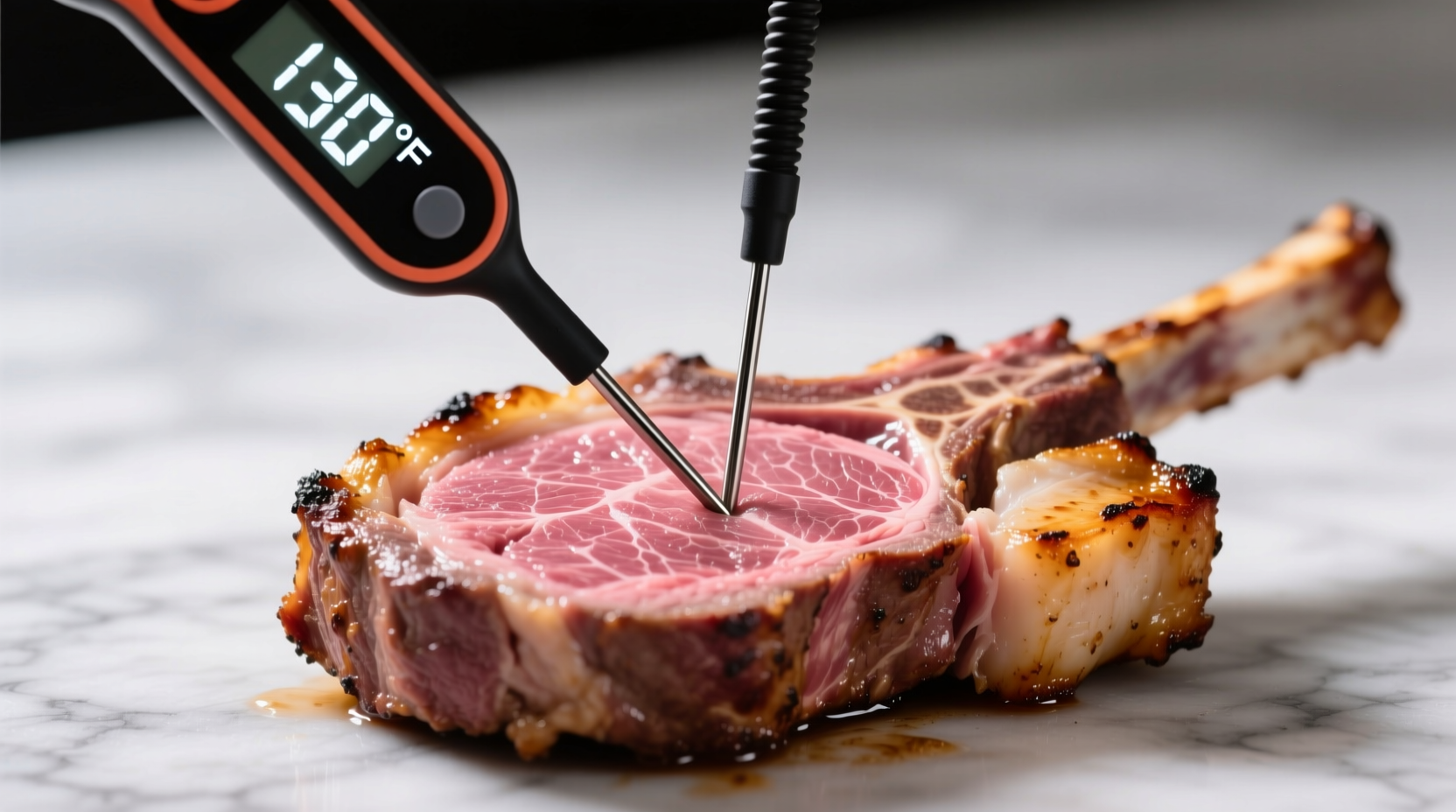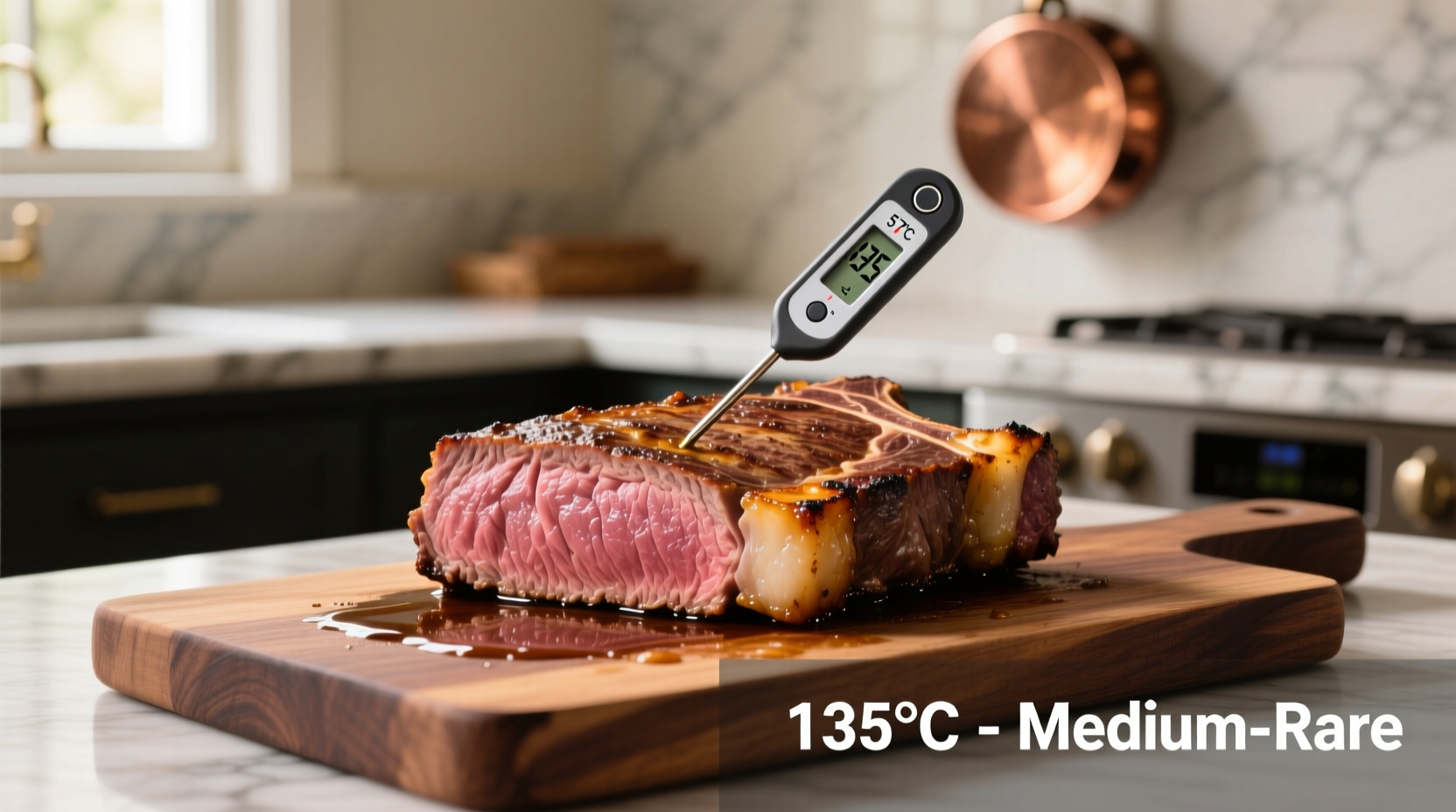Getting lamb temperature right transforms your cooking from risky to remarkable. Whether you're preparing a special holiday roast or weeknight chops, understanding precise temperature targets ensures both safety and exceptional flavor. This guide delivers professional insights you can trust, backed by food safety research and culinary expertise.
Why Temperature Matters for Perfect Lamb
Lamb's delicate balance of fat and protein requires precise temperature control. Undercooked lamb risks Salmonella and E. coli exposure, while overcooked lamb becomes tough and dry. The sweet spot? Temperature precision that preserves moisture while eliminating pathogens. Professional chefs and food scientists agree: a reliable meat thermometer is your most essential kitchen tool for perfect lamb every time.
Lamb Temperature Guide: Doneness Levels Explained
Understanding temperature ranges for different doneness levels helps you achieve your desired result. Note that temperatures continue rising 5-10°F during resting - the critical final stage many home cooks overlook.
| Doneness Level | Internal Temperature | Visual Characteristics | Resting Time |
|---|---|---|---|
| Rare | 120-125°F (49-52°C) | Deep red center, very soft texture | 8-10 minutes |
| Medium-rare | 130-135°F (54-57°C) | Warm red center, slightly springy | 10-15 minutes |
| Medium | 140-145°F (60-63°C) | Pink center, firm but yielding | 12-15 minutes |
| Medium-well | 150-155°F (66-68°C) | Slightly pink center, quite firm | 15 minutes |
| Well-done | 160°F+ (71°C+) | No pink, very firm texture | 15+ minutes |
According to the USDA Food Safety and Inspection Service, the minimum safe temperature for whole-muscle lamb is 145°F with 3 minutes rest time. This recommendation balances food safety with culinary quality, reflecting updated research on pathogen elimination temperatures.
Temperature Requirements by Lamb Cut
Different cuts require slightly different temperature approaches based on fat content and muscle structure. Understanding these variations prevents disappointing results.
Leg of Lamb
For bone-in or boneless leg roasts (3-7 lbs), target 130-135°F for medium-rare. This cut benefits from slower roasting at 325°F after initial high-heat sear. The American Lamb Board recommends inserting your thermometer into the thickest part, avoiding bone contact.
Rack of Lamb
Frenched racks (typically 7-8 ribs) cook quickly. Remove from heat at 125-130°F for perfect medium-rare after resting. Professional chefs often use the "feel test" alongside thermometer readings - the meat should yield like the base of your thumb when making a loose fist.
Lamb Chops
Whether rib, loin, or shoulder chops, aim for 130-135°F for optimal texture. Thinner chops (under 1”) require careful monitoring as they can overcook in seconds. The National Cattlemen's Beef Association notes that shoulder chops benefit from slightly higher temperatures (135-140°F) due to their connective tissue content.
Ground Lamb
Unlike whole-muscle cuts, ground lamb must reach 160°F (71°C) throughout. This higher temperature eliminates pathogens that may have been distributed during grinding. The FDA Food Code specifies this requirement applies to all ground meat products.

How to Measure Temperature Accurately
Proper thermometer technique makes or breaks your results:
- Use an instant-read digital thermometer for precision (within ±0.5°F)
- Insert probe into thickest part of meat, avoiding bone or fat pockets
- Take multiple readings in different areas for larger cuts
- Check temperature during final cooking stages (last 10-15 minutes)
- Never leave thermometers in oven during cooking (except oven-safe models)
Resting Time: The Critical Final Step
Resting allows juices to redistribute throughout the meat. During this period, carryover cooking raises internal temperature 5-10°F. Professional kitchens follow these resting guidelines:
- Chops and smaller cuts: 5-8 minutes tented with foil
- Racks: 10 minutes uncovered on a wire rack
- Leg roasts: 15-20 minutes loosely covered
Skipping this step causes precious juices to spill out when cutting, resulting in dry, disappointing lamb. The James Beard Foundation emphasizes that proper resting transforms good cooking into exceptional results.
Food Safety Timeline: How Recommendations Evolved
Lamb temperature guidelines have evolved significantly as food science advanced:
- Pre-1990s: Many cookbooks recommended cooking lamb to 160°F+ for safety
- 1995: USDA lowered safe temperature for whole-muscle meats to 155°F
- 2006: Research showed pathogens eliminated at lower temperatures with proper rest time
- 2011: USDA officially adopted 145°F with 3-minute rest for whole-muscle lamb
- Present: Current guidelines balance safety with culinary quality based on extensive research
This evolution reflects improved understanding of pathogen elimination temperatures. The Centers for Disease Control and Prevention now confirms that 145°F with proper resting time effectively destroys harmful bacteria in lamb.
Avoiding Common Temperature Mistakes
Even experienced cooks make these temperature errors:
- Guessing instead of measuring - Visual cues alone are unreliable for temperature assessment
- Checking too early - Opening the oven frequently extends cooking time and creates temperature fluctuations
- Ignoring resting time - Cutting immediately causes 20-30% juice loss
- Thermometer placement errors - Measuring near bone or fat gives false readings
- Using inaccurate thermometers - Calibrate regularly by testing in ice water (32°F) or boiling water (212°F)
Practical Temperature Tips for Home Cooks
Implement these professional techniques for perfect lamb:
- Bring lamb to room temperature (45-60 minutes) before cooking for even heating
- Use the oven's residual heat - remove lamb 5°F below target temperature
- Create a temperature map for roasts by taking readings in multiple spots
- For grilling, establish two cooking zones (direct and indirect heat)
- Record temperatures in a cooking journal to refine your technique
When to Adjust Temperature Guidelines
Certain situations require temperature adjustments:
- High-altitude cooking (above 3,000 ft): Add 2-4°F to target temperatures
- Smoking or slow-cooking: Maintain 225-250°F ambient temperature until reaching 130-135°F internally
- Sous vide preparation: Cook at precise temperatures (125-134°F) for 1.5-4 hours depending on thickness
- Leftover reheating: Bring to 165°F for food safety
These context-specific adjustments ensure optimal results regardless of your cooking method. The Culinary Institute of America emphasizes that understanding these variables separates adequate cooking from exceptional results.











 浙公网安备
33010002000092号
浙公网安备
33010002000092号 浙B2-20120091-4
浙B2-20120091-4